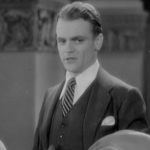 |
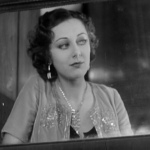 |
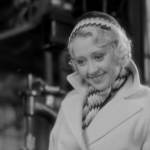 |
| Joe James Cagney |
Lee Ann Dvorak |
Anne Joan Blondell |
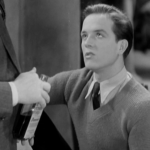 |
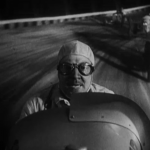 |
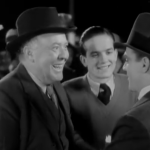 |
| Eddie Eric Linden |
Spud Frank McHugh |
Pops Guy Kibbee |
| Released by Warner Brothers | Directed By Howard Hawks |
||
Proof That It’s Pre-Code
- Joe (Cagney) and Lee (Dvorak) are clearly sleeping together before they’re married. But this also means that Joe doesn’t want to marry her, since she’s one of those girls.
- A man gets roasted alive. And apparently it doesn’t smell too great.
The Crowd Roars: Rollin’ Rollin’ Rollin’
“You’re somebody who thinks all you have to do is win a race and bring home a trophy and first prize money and I’m satisfied. But you’re wrong. When you get back from a race and when I see that checkered flag, I’m glad and I’m happy. Not because you’ve won, but because I’ve got you back. You’re safe. Oh, Joe, why do you go on anyway. Risking your life for nothing. Grinding away, a little money, a few cups. Crowd yelling in the grandstand. A lot of people watching for wrecks and roaring for blood. All they want to see is that car turn over a half dozen times so they can hold their breath. When the ambulance takes away what’s left of you, they point at it and say, ‘Oh, isn’t it awful, they’re taking him away.’ That’s why I want you to quit driving. That’s why we should stop drinking, too. If you stopped, maybe you’d listen to reason.”
I spent a lot of The Crowd Roars wondering if Howard Hawks was aware of the irony in a speech like this. Races (and, conversely, racing movies) are built on two things, spectacle and anticipation. The Crowd Roars is made to make us wait for two things: for Cagney to wise up and realize that he has to let his brother live his own life and the violent death of one of the side characters.
I won’t tell you which side character it is, but there are so many red flags present beforehand that it almost becomes humorous. Oh, no, he forgot his lucky charm for this race! What ever could happen? In fact, this same sort of anticipation meets many of the film’s problems, an abundance of cliches that it’s hard to believe felt fresh even back when the film was made. Even if The Crowd Roars is a progenitor of a lot of racing melodramas, there’s slim pickings throughout to make it even worth a cursory glance for anyone who isn’t marathoning some of the film’s lengthy list of wasted talent.
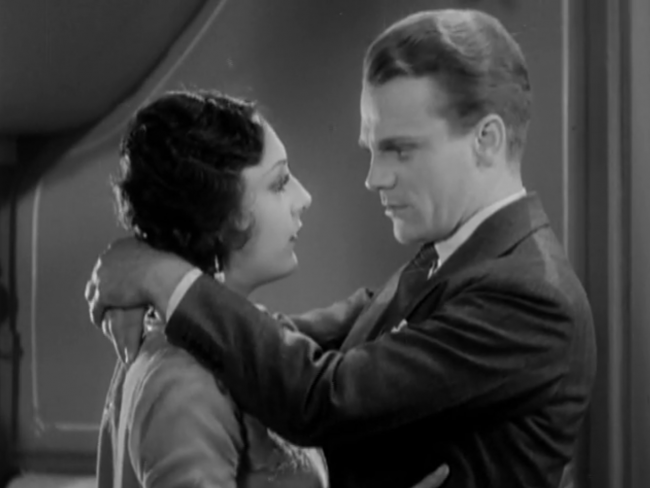
“Now listen, Lee, I like my women like I like my race cars: hot, ready to go, explosive, and completely out of style the next model year.”
The story: the racing world’s biggest car champ is Joe Greer (Cagney). He recently won the Indy 500 (not mentioned by name, but it’s at Indianapolis and consists of driving 500 miles, sooooo…) and is returning to town at the peak of triumph. Also along for the ride is his side dish, Lee (Dvorak), who is clearly sharing more than discreet kisses with him. She’s upset with Joe because his daredevil job means there’s a good chance that he’ll die in a fireball at any minute (while racing, just to clarify). But Joe is more concerned with making sure she’s put in her place and understands that because she had sex with him before they’re married, she’s obviously unworthy of marriage. They’re a fun couple.
In town, Joe reunites with his upstart younger brother Eddie (Linden), who is an amateur racer himself. After proving himself to Joe and Joe’s partner, Spud (McHugh), Eddie joins them on the racing circuit. However, this only steels Joe’s resolve to put Lee out to pasture since he can’t stand imagining his little brother as anything other than a pure, virginal version of himself that he gets to control. In a fit of frustration, Lee tells her friend Anne (Blondell) to break Eddie’s heart, which goes great until Anne falls in love with the young kid. He knocks boots with her, leading to Joe angrily renouncing him, a disastrous race, death, PTSD, and another go at the Indy 500 to make everything up to everyone still alive.
Spoilers.
There’s plenty of blood in the movie (and I do mean blood, this is a pre-Code), but by far the most effective moments of the movie come from Spud’s death. He tries to prevent Joe’s drunken vengeance on his brother for slighting him in the heat of a race by getting in between the two. Mind you, Spud’s been setup to get knocked down the whole movie as he has a family kids and is the person that everyone likes and trusts. He’s a lynchpin of sanity in an almost incestuous love rectangle, and, thusly, Frank McHugh must become a well done frank-McHugh-furter.
It’s not often that you see smell portrayed well on the movie screen– nor often that people try it, obviously– so Hawks’ use of Spud’s roasting flesh as a way to emphasize the horror of what Joe’s done as well as the visual of a spreading chain of fire is superb. The way that the smell comes to haunt Joe afterward, too, and how it plays into the film’s climax as his brother helps him overcome that traumatizing moment wordlessly, are among the film’s neatest and tightest beats.
And that pretty much rounds out the nice things I have to say about the picture.
End spoilers.
Cagney seems positively sedate here. When he decides to become the ideal older brother, his eyes turn glassy and he recites lines with about as much enthusiasm as I’m sure a typewriter could muster. While I know people refuse to believe it can happen, this might be his worst performance of the first half of the decade. He’s leaden and slow, which is certainly reflected in the tone of the film itself (which feels about twice as long as it is), but it’s amazing that the normally vivacious Cagney can’t breathe any life into it.
No one else fares much better. Dvorak’s put in such an ugly role as a single/simple-minded hopelessly devoted loser that her meltdown when Joe leaves her is embarrassing to watch– not because of the acting, which Dvorak puts her heart and soul into, but that it makes her character into such a pathetic weirdo that she’s impossible to root for. How bad is Lee as a character? I cannot name one trait about her that doesn’t revolve around Joe. Considering how many roles of the era saw strong women brought down by weak men, having Lee function barely above the level of ‘loyal dog’ is inordinately off putting.
Blondell’s Anne is almost worse in a way. She starts out with a devil-may-care attitude and a plan to seduce Eddie just for kicks, but almost instantly falls for his uncompromising blandness. Why? Because in this film, women are tramps who instantly decide to stop because all their crazy lady-emotions fixate on one dangerous, brave man.
Linden, as the fourth part of this love rectangle, is just a void. He made me fondly wish for Tom Brown’s amazing mustache in Central Airport to crawl over and jump on him since that would have at least given him a whiff of personality.
With its glacial pace and tired cliches, The Crowd Roars is one of those films you silently nod your way through. Ah, yes, Eddie embraces what Joe cannot and succeeds in his stead. Oh, and Hawks is mirroring the train trip at the beginning of the movie with one where Joe arrives unwashed and broke. Ah. I understand, Howard. Those men are real race car drivers performing cameos to show what sensitive and understanding all the men are when they’re not behind the wheel. I see what you did with the film’s structure.
It’s all very academic and tedious. To waste at-their-prime Cagney, Blondell and Dvorak in a neutered fairy tale with fast cars should be a crime.
Gallery
Hover over for controls.
Trivia & Links
- Remade as Indianapolis Speedway (1939) with Pat O’Brien in the Cagney role. Interesting side note on that: Frank McHugh plays the same role in both movies, and the racing footage is simply reused in the remake.
- The film’s title is parodied in the 1932 cartoon “The Crowd Snores”. Besides being on a racetrack, that’s where the similarities end. Here’s the cartoon for posterity:
- Side note: how many Cagney movies does Guy Kibbee play someone named ‘Pops’? I know in at least this one, Taxi, and Winner Take All. Maybe it was a contract stipulation?
- The inscrutable MovieDiva gives you the full lowdown on this picture, talking about Cagney, Blondell and Dvorak, as well as the fast-living Hawks’ take on life. Here’s some info on the film’s casting and schedule:
At first, Dorothy Mackaill was cast as Lee, Cagney’s girlfriend, with Ann Dvorak as the seductive Anne. Just before shooting, Hawks substituted Joan Blondell, who had costarred often with Cagney, as Lee. Once they started in, “Blondell announced, ‘I can’t play a neurotic’ and Dvorak decided, ‘I can’t play an ingenue’ and with Hawk’s agreement, they swapped roles without even telling the studio” (McCarthy 161).
Hawks shot 6 days a week through December of 1931 and January of 1932, with only Christmas and New Year’s Day off. Twenty six days of filming was languid for a WB film of those days. He really enjoyed the filming process, and he recruited professional racers, including 1930 Indy winner Billy Arnold to appear, and to design the stunt driving sequences. (Arnold plays a character called Bill, who talks to Cagney in the pits before a race). The Dusenberg brothers were on the set to see what was being done with their race cars. One of them designed a special tow bar to release a car going 120 mph for a specific moment in the action, and clouds of smoke and rivers of fire were designed for thrills, although, amazingly, nobody was hurt during those stunts. At one shocking moment in the film, several women in the opening night press screening allegedly became hysterical.

“Oh my, we womenfolk are concerned again. Perhaps we can just birth children while we wait so we don’t have to watch.”
- Acidemic covers this briefly in a capsule review, and though he gives it three stars, seems to have several similar issues with it:
A laconic, very interesting parade of Hawks-types has to say no to him, and it’s here more than anywhere else you can feel the Hawksian touch in its infancy, and when Cagney finally tells Ann about the crash and the smell of McHugh’s burning corpse, he cracks up in her arms, and from then on it’s racing with style and you know it’s not just Cagney’s macho racer that has to learn women are wiser than men, it’s Hawks too. And he does, and maybe Dvorak and Blondell are the ones that taught him, like they teach Cagney. Maybe? Maybe nothin’!
- Mike Grost points out a lot of motifs in Hawks’ work, some silly (Hawks likes his characters to wear layered clothes? Really?) and others more interesting, like how this film is reflected in a later Hawks racing movie. I also like this point about the film’s social motivations:
The politics of The Crowd Roars is strange. Much of the country was unemployed in 1932, due to the Depression. The hero loses his racing job towards the end of The Crowd Roars. He is shown in frightening scenes of looking for work, and trying to get enough to eat. But the reason he has no job, is that he is drinking and “on the skids”: it’s a psychological problem! The hero is going through the same unemployment problems as much of the audience – but for completely different reasons.
- Tons of stills and pics for this one over at Doctor Macro. There are also some stills over at AnnDvorak.Com, mostly centered on one of the film’s actresses. (I’ll let you guess which one.)
- Joan Blondell gets a tribute for her work here from the Movie Morlocks.
- Judy at Movie Classics is much more favorable of the film, and finds a certain amount of tragedy in it.
Although the final race scene is better than I’d thought, it’s still ironic in some way that, after breaking down, all Joe can hope for is to go back to racing, rather like the shell-shocked war aces in other movies I’ve seen who are healed only to go back to the front.
- TCMDB, while being suspiciously enthusiastic about the film, mentioned pretty much the only good thing to have come out of it:
After their first day of filming, Cagney and his co-star, Frank McHugh, retired to the hotel suite that they were sharing while working in Santa Barbara. The two men had met briefly a couple times before, but they started a conversation that, once they realized how much they had in common, lasted until early the next morning. They reported to work the next day without having slept a wink, and remained friends for the rest of their lives.
- Last but not least, the film’s trailer:
Awards, Accolades & Availability
- This film is available on Amazon and Warner Archive.
Comment below or join our email subscription list on the sidebar! |
||
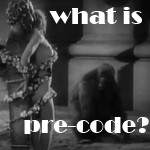 |
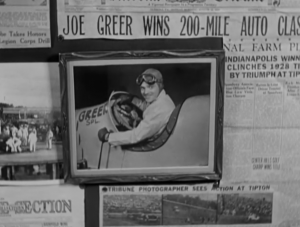 |
 |
 |
 |
|

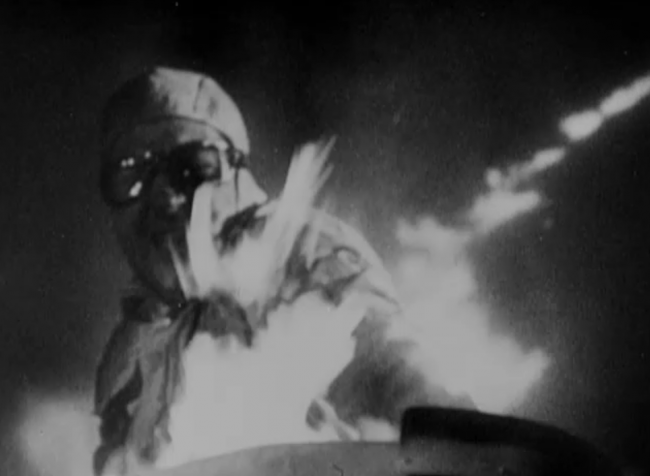

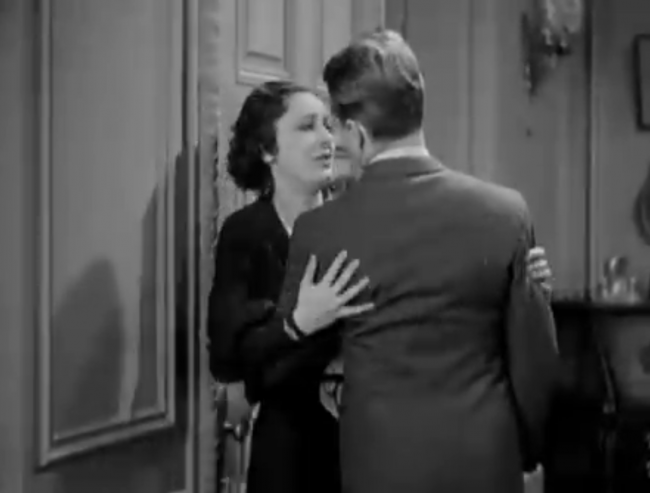
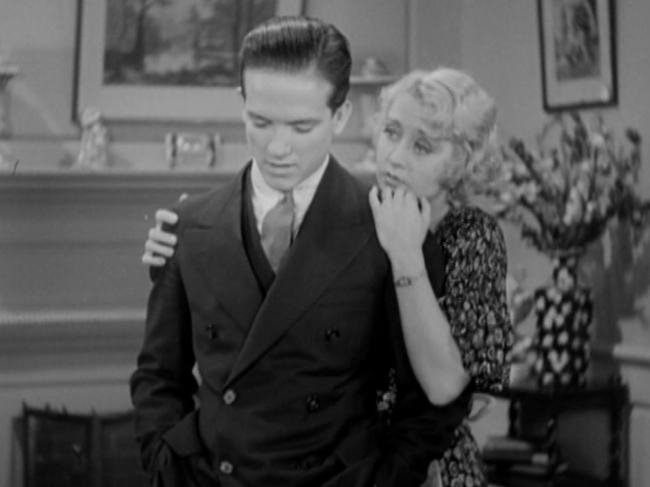
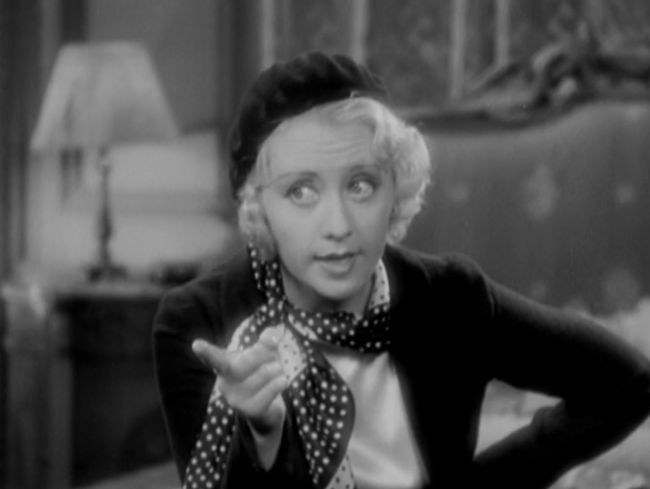
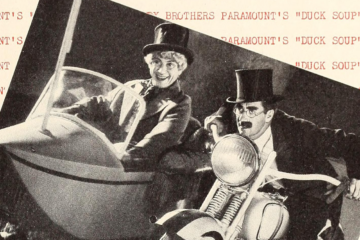


11 Comments
Judy · July 17, 2015 at 1:27 am
Thanks for the link, Danny – that was one of the first reviews I wrote, I think. Having seen your well-argued criticisms here, I have to wonder if I’d still love this film so much now. I might have been too busy swooning over a Hawks, Cagney, Blondell and Dvorak combination to notice any problems.
You certainly make some great points about the sexism and double standards – I think I took it that, as Joe is punished for these, the film finally takes an opposite view. But I’ll have to revisit it!
Danny · July 26, 2015 at 10:50 pm
I think it could be said that Joe learns that he has to embrace his manly urges to finally succeed, but it’s not teaching him anything about women, just about the problem with self denial. That fits in with the themes of a lot of pre-Codes, but it rang kind of hollow this go around.
Judy · July 17, 2015 at 1:30 am
PS, there seem to be one or two pre-Codes where a big brother is determined to stop younger brother from following exactly the same path as him – William Powell can’t stand the idea of his brother following in his footsteps as a gambler in Street of Chance.
doriantb · July 17, 2015 at 1:54 am
Danny, I don’t blame your tumbs- down on THE Crowd ROARS, especialy what happens to our beloved Frank Frank McHugh! I may never like barbcue again!
Danny · July 26, 2015 at 10:52 pm
Ha! Well, at least Guy Kibbee made it to the closing credits.
Jen · July 17, 2015 at 2:07 am
Frank McHugh-Furter. You, sir, are a genius.
Danny · July 26, 2015 at 10:53 pm
Thank you! I’m here all week. Please tip your waitress on your way out.
DeniseW · July 18, 2015 at 11:47 pm
I certainly can’t argue with your points about the film, but as a fan of the Indianapolis 500 past and present, “The Crowd Roars” is invaluable to see the actual racing heroes of the early ’30’s. Wilbur Shaw, who was the first three time winner of The 500, was the technical advisor for Hawks in this film per Shaw’s autobiography.
Danny · July 26, 2015 at 10:54 pm
Yeah, I totally get that. If you’re a racing fan, it’s a pretty interesting document for sure.
La Faustin · July 20, 2015 at 2:11 am
Eric Linden is adorable paired with Joan Blondell in BIG CITY BLUES — which also features a Clarence Muse cameo as a tuxedoed nightclub singer, so I know it’s going to the top of your list.
Danny · July 26, 2015 at 10:54 pm
Hell yeah
Comments are closed.